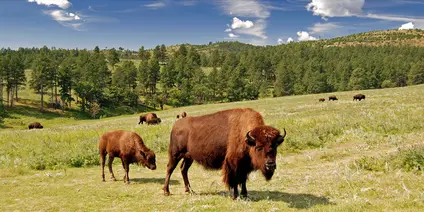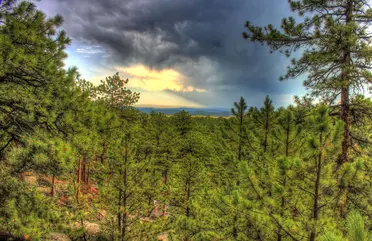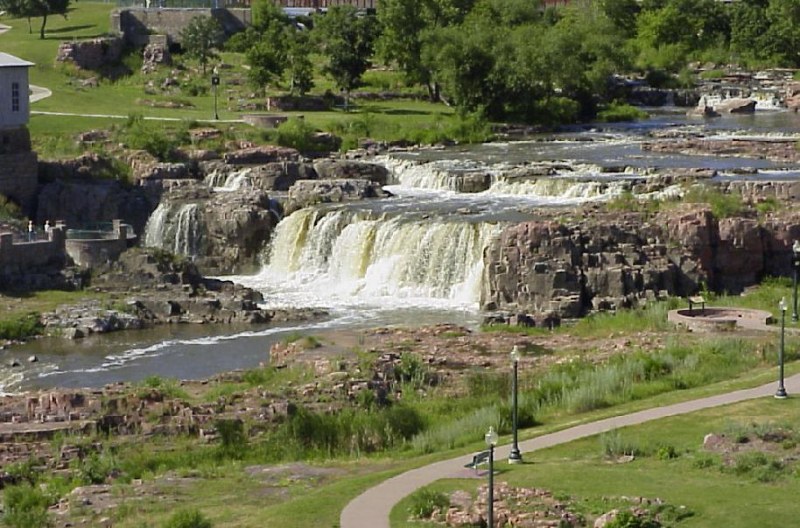Unraveling South Dakota’s Rugged Landscapes and Its Venomous Denizens
This storied land of South Dakota, famed for its expansive prairies and majestic Black Hills, attracts throngs of visitors each year. But hidden within this picturesque setting lies one of its most fearsome inhabitants: the prairie rattlesnake, Crotalus viridis. An essential feature of South Dakota’s varied wildlife, these snakes make their presence felt, particularly in the western regions, demanding a blend of admiration and caution from explorers.

Custer State Park
Custer State Park, a 71,000-acre expanse nestled in South Dakota’s Black Hills, is more than just a natural wonder. It’s a paradise for outdoor enthusiasts, offering a suite of activities — from biking and hiking to fishing and camping. The park is home to over 1,400 bison and serves as a sanctuary for wildlife, with established conservation efforts evident at landmarks such as the dedicated Bison Center and the Peter Norbeck Outdoor Education Center.
Visitors to the park should remain vigilant, however, as prairie rattlesnakes frequently settle among its rocky outcrops. In June of this current year, a poignant episode occurred with the unfortunate death of a curious park burro from a snakebite. Such incidents underscore the necessity for careful exploration and respect for all wildlife.

Black Hills South Dakota
The Black Hills represent a convergence of natural beauty and historical significance. Rising sharply from the Great Plains, this mountain range not only offers verdant trails and abundant reservoirs but also holds profound cultural relevance for the Lakota people. For the Lakota — one of the most prominent Native American tribes in the region, with figures like Sitting Bull and Crazy Horse among their ranks — these lands are sacred, a focal point for activism regarding ancestral land rights and treaty violations with the U.S. government.
Exploring the Black Hills, one is not only walking amidst breathtaking geographies but also treading deeply historical ground. The Lakota, known today for their enduring spirit and resilience, faced significant adversities following the Great Sioux War, culminating in territorial losses and the subsequent illegal seizure of lands by the U.S. government.
The interplay of human history and diverse ecosystems in areas like Lake Francis Case enriches South Dakota’s touristic appeal. This 100,000-acre reservoir along the Missouri River offers plenty of recreational activities such as fishing, boating, and wildlife observation. Prairie rattlesnakes add to the natural complexity of this area, thriving among the grasslands and requiring careful navigation from visitors during excursions.
A similar dynamic exists at Lake Oahe, encompassing over 230 miles along the Missouri River. Formed by the Oahe Dam’s completion in 1958, the lake’s vast waters support an array of aquatic life, including sought-after walleye stock for anglers. Its adjoining prairies and bluffs, like Custer State Park, necessitate vigilance due to the potential presence of rattlesnakes.
Meanwhile, the Grand River National Grassland in northwest South Dakota stands as another testament to the region’s natural beauty. With over 154,000 acres of protected land, the grassland reclaims its ecological heritage, marred in the past by the Dust Bowl but now a vital area for activities like hiking, hunting, and angling. The presence of prairie rattlesnakes across these vast prairies highlights their role in maintaining the ecological balance.
As visitors venture through South Dakota’s diverse landscapes, they are reminded of both the majesty and the latent challenges of the natural world. Key among these is the prairie rattlesnake: a remnant of an older Earth, entwining its survival with the intricate tapestry of its environment. With knowledge and respect for these creatures, alongside the history of the land from the Lakota perspective, tourists can savor the harmony of adventure and safety.
Safety in the presence of rattlesnakes involves wearing the right attire, staying on trails, avoiding tall grasses, and listening for that distinctive rattle. Understanding their non-aggressive nature is crucial; interference or attempts to handle them could lead to unnecessary conflict.
Travelers to South Dakota thus embark on a dual journey — one into the natural mosaics of mountains, rivers, and prairies, and another into the heart of the Lakota and their enduring narrative, seeking justice and preservation for future generations.
